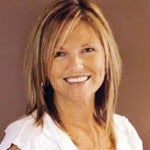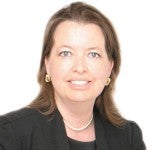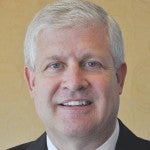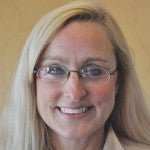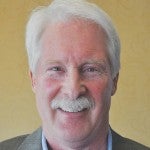School board candidates sound off
Published 11:22 am Wednesday, November 2, 2011
With less than one week before this year’s election, Austin Public School board candidates are sounding off on important current and future district issues.
Six candidates are vying for four seats. Incumbents Kathy Green and Don Fox hope to keep their seats while Greg Larson, Jeff Ollman, Carol McAlister and Angie Goetz are looking to claim their first posts.
The Herald asked each candidate five questions about district issues, from the school’s diversity efforts to changes in technology. Though they may differ slightly on the issues, the candidates offered their takes on Austin schools.
Responses to questions about the $28.9 bond referendum were in the Herald on Tuesday.
1. Why did you want to become a school board member? What experience do you have that would make you an effective board member?
Fox: I have spent a lifetime involved with student learning — it’s been a persistent love and goal of mine to continue working with young people.
I have had three children in the Austin school system and they benefited tremendously from many learning experiences.
I have coached, been a guidance counselor, teacher, Austin High School Assistant Principal, elementary Principal, interim Athletic Director, and interim elementary Principal. I have held various offices as a school board member. I started the teen court for Mower County Corrections, which still exists today.
Goetz: I am a mother of three children ages 9, 8, and 4 years old. Our community and students benefit from a well-rounded school board. The Austin school board is strong and headed in a positive direction. However, I feel it could be further strengthened by adding more diverse members. I can offer a unique perspective that is not currently represented on the board — that of a mother of three elementary school age children; young children who will be a part of our school district for many years to come.
—I’ve worked as a college admissions counselor.
—I’m currently employed by Jackson Management Company and have been the property manager for a large, culturally diverse apartment complex for 13 plus years.
—I have been a volunteer mentor and youth group (sixth-12th grade) leadership member for 13 years.
—I’m a former Austin Packer Varsity Dance Team coach (2000-2003).
—I’m an elementary-level Junior Great books volunteer.
The bottom line is that I am running for school board because I want my kids — our kids to have the best education they can possibly have. I want to have a “voice” in the decision making to see that happen. I believe we have great teachers, innovative administrators, and fantastic students — simply put, I’m excited to be a part of all that lies ahead for our district.
Green: I have been a school board member for 12 years and I wish to continue my service to our students and citizens. I believe in public education and local involvement at a time of increased state and federal oversight. I can be a voice for the educational needs unique to Austin students.
Experience that I have serving the Austin school district:
—Austin school board member 12 years, four as chairperson.
—Director of Minnesota School Boards Association representing southeastern Minnesota school boards, two years.
—Trustee for Public Employees Retirement Association board representing school districts throughout the state of Minnesota, seven years, second term.
—Member of The Military Child Education Coalition’s Living In the New Normal, A community awareness and planning committee to find ways to enhance Minnesota’s support of military-connected children.
—Austin Community Scholarship Committee member.
—Extensive experience in public policy development and I have a vital understanding of testing, evaluation, and accountability of education standards.
Past Experience:
—2003 and 2007 Minn. Math Standards committee member charged with developing K-12 math standards for the state.
—2006 Member of Minnesota Early Learning Foundation.
—1998-03 Austin Park, Rec. and Forestry Committee member.
—1993 Blandin Community Leadership Program.
—1990 Chairperson of successful Levy referendum to build and renovate school facilities in Austin.
—Graduate of the University of Minnesota.
Volunteer activities:
—Boy Scouts of America leader, Troop 112
—Teaching chess to school children.
Larson: I am very appreciative of the education our two sons and one of our daughters-in-law received in Austin. They have all done well and were able to continue their education and have jobs in the communities where they live. I have been blessed while living here and it is time to give some of my time back to the community.
I believe my work experience as a CPA will be a plus for the School Board. Part of my work experience has been doing governmental audits, including audits of school districts.
McAlister: The district is facing challenges. I am running for school board because I believe that, along with challenges, come great opportunities for continuous improvement. I would be honored to serve the community by being part of the decision-making process of the School Board to make Austin Public Schools the best they can be. I believe that the decisions made by the School Board need to reflect not only what is in the best interest of the students, but also what is in the best interest of all of the citizens of Austin.
I have many experiences that would help me fulfill the duties of this office. I served on the Wee Learning Center Board of Directors (Preschool Education) for 12 years and have volunteered in numerous capacities in Austin schools. I have worked in research at Mayo Clinic for 23 years, so I am accustomed to analyzing data and strategically looking “outside of the box” for solutions. I have a bachelor’s degree in communications and management and a master’s degree in administration and telecommunications. As a business manager/financial analyst, my professional responsibilities include: developing and managing a $12 million budget; identifying cost savings, efficiencies, and reductions; researching proposals and funding opportunities; grant writing; keeping abreast of federal and state regulations; working well on a team and supporting group decisions; and completing multiple projects on time and within budget.
Ollman: I want to become a board member because I care deeply about our kids and community. My 31 years as a speech/language pathologist in the public and private schools combined with relevant business experience put me in a position to make the best educational and budgetary decisions for the district. My experience working with children, parents, teachers, principals, and other administrators give me a perspective that will allow me to prioritize needs when cuts have to be made. My business experience includes 1.5 years as a department manager in a large retail chain and establishing my own consulting business in Austin and the surrounding area in the late 80s to the late 90s. I became the coordinator for the speech pathology department in the Austin Public Schools in the mid 80s and held that position until budget cuts eliminated it. During my time as coordinator, I achieved the Certificate of Clinical Competence (American Speech & Hearing Association equivalent of National Teacher Certification) and facilitated the work of six other speech pathologists. I served on the board of directors of the Parenting Resource Center and have attended dozens of school board meetings during the past 15 years.
2. Several board members have pushed to make the proposed fifth- and sixth-grade school a Science, Technology, Engineering and Mathematics (STEM) school, with a focus on critical thinking and analysis. What benefits or hindrances do you feel a STEM school would bring to the district?
Fox: The STEM approach is a nationwide movement to increase student critical thinking, analysis, and technology — hands on learning.
A STEM approach is also an opportunity for students to collaborate with industries. An arts program would also benefit.
Goetz: I recently sat in on the school board presentation given by Tom Fritz (science teacher at Ellis Middle School) and Eric Harder (math teacher at Ellis) regarding using the STEM (Science, Technology, Engineering, and Math) school model for the potentially new fifth- and sixth-grade building. A STEM school emphasizes all four of these disciplines by integrating them with each other. This would give our kids an advantage as they move from our schools into college and the workplace. After seeing their presentation, I am in full support of this. If the tax bond referendum is not approved, I would be interested to see Ellis Middle School takes steps toward a STEM school model.
Green: The term STEM is putting a focus on what is a natural expansion of our student learning in the fifth- and sixth-grade level. By bringing all of our students together at one sight, we could expand and support the enhancements that have been made at Ellis and the high school in these areas. Our students would be exposed to knowledge and skill sets that will serve them well in their education and careers.
Larson: From what I have learned about (STEM) from questions to board members and staff of the district, that this is a new way of teaching that has been started and I believe would be a plus in the new fifth- and sixth-grade building that would be built if the referendum passes. This is a way of teaching that will focus on critical thinking and analysis to help students engineer their way to solving a problem. If this were in place, some board members feel this would be a plus in retaining students and even be a draw for families that would favor this type of teaching. I believe it would be beneficial for keeping the new families in Austin that will be coming here with the new Hormel Institute addition. The only drawback I can see would be some of the upfront cost for staff time and training for getting the staff up to speed on this method of teaching.
McAlister: Research has shown the missing component in STEM education is the arts. I would like to see the district consider a Science, Technology, Engineering, Arts, and Mathematics (STEAM) school.
Benefits: STEM education, with the art component, is designed to teach the “whole” student, which will make them more successful members of society in the 21st century economy. A well-balanced education, that includes STEM elements, will prepare students for STEM fields in college, and will allow students to continue to see great advancements in the future generations. STEM education will help students to make informed decisions all of their lives.
Hindrances: The development of a fully integrated STEM curriculum, especially one that includes an engineering component, will be challenging. The district will need to recruit and retain qualified STEM teachers and provide on-going professional development and training, as STEM knowledge is rapidly changing. STEM subjects are highly cumulative and sequential, so if students fail to understand beginning concepts, they face further difficulty down the road. STEM knowledge is specialized, and some of the knowledge and methods of STEM subjects can be difficult for students to master in the context of everyday lives. STEM subjects are not always familiar and accessible to the public, thus, the general public’s comfort with STEM subjects is more limited.
Ollman: STEM schools promote an integrated curriculum with many hands on lessons that relate science, math, engineering, and technology to real world projects.
Some figures that I have read state that science and engineering jobs are growing about 70 percent faster than other occupations. This means that STEM school students will be at an advantage when competing for the high tech, high wage jobs of the future. It is extremely important for helping to create and maintain a strong, stable economy for the future.
3. Beyond school crowding, what issues must the district address in the next five years?
Fox: Continue with fiscal responsibility and continue to improve the achievement gap and our posture with No Child Left Behind.
Work with staff development to enhance curriculum development and methods.
Goetz: Current technology for students with limited space and resources, accommodating our rapidly changing demographics, and increasing the achievement gap.
Green: The uncertainty of our state and federal funding threatens the continuity and security of our programs. It is imperative that we remain fiscally responsible, staying current with legislative action and keeping communication streams open with the policy makers, voicing our circumstances. Academically, we need to be constantly looking at our curriculum, making sure it is relevant to the needs of our students. Our staff needs the opportunity and support to develop the tools and skill sets to prepare them for the future. I would approach decision-making and policy development with a comprehensive, long-range view for what will grow our district as a district of excellence.
Larson: Two items:
—Continued funding shortfall at the state level. State budget woes have and will continue to cause a strain on the cash flow of the district. From my understanding, the district has maintained a stable fund balance going into this and hopefully will be able to maintain programs without major reductions in any student programs. The projected enrollment increases should be a plus for us, as that should help increase funding to the district.
—No Child Left Behind. This past year, the district, as well as many districts, did not meet their goals for 2010-11. The district is mandated to work with this program. I believe the district’s implementation of the 45/15 schedule that was recommended by staff and administration is a way of trying to improve progress. I am hopeful, as most of us are, that this will make a difference.
McAlister: —Needed improvement in test scores. The district must address the achievement gaps and raise student achievement so that adequate yearly progress can be demonstrated as a requirement of the provisions of the No Child Left Behind Act.
—Financial constraints and uncertainty of the state’s future budget for education. The district must address the lawmaker’s approval of delaying payments of state aid for school districts. The district will need creative solutions to make up the difference in the loss of cash flow until reimbursement can be received.
—K-12 curriculum changes to address STEM (or STEAM) education and the use of advancing technology in the classrooms. The district will need innovative ideas, curricula, teacher training, and resources for STEM education and the use of technology.
Ollman: We must continue our efforts to narrow the achievement gap and promote better results in the reading, math, and science curriculum, along with integrating technology. In addition, funding will continue to be a challenge.
4. Austin is a rapidly changing community with many students from different cultures coming to the district. What initiatives should the district take to accommodate diversity?
Fox: To continue initiatives with activities. For example: Pre-kindergarten education, adult community center English classes, student English Language Learner classes, after school classes, collaboration with rural schools, Austin High School Link Crew program, intervention teachers, and Success Coaches.
Goetz: This is an issue that needs to be at the forefront of our discussions as a community and as a school district. I believe our schools are making great strides in this area. However, our community is evolving and so must our initiatives. My hope is not simply to accommodate diversity in our schools, but that all students will thrive because of it. I look forward to the innovative ideas of our students, teachers and administrators in regards to specific curriculum and teaching methods as a means of accommodating diversity.
Green: Part of a vital district is one that can adapt to and embrace change. We have a dynamic staff that look for and seek out resources to remain relevant and engaging for all students.
Larson: I believe that the district has tried to work with the different cultures. I believe that the 45/15 is a result of trying to help students achieve and quicker adapt to our education system. I believe the district also has some education coaches in place at some of the district buildings to help as a mentor to help new families acclimate to our community and the education system.
McAlister: I would recommend that the district and the community partner to offer opportunities to foster an appreciation of differences, understanding and mutual respect. Diversity initiatives could include faculty training, curriculum initiatives, speakers, or perhaps an international assembly that would showcase diverse talents, customs, foods, music, and dancing. “Incognito” is a performance by Michael Fosberg that has been used in schools as an excellent method for diversity training. “Incognito” deals with issues of race, diversity, identity, adoption, and divorce. “Incognito” has received wonderful reviews, and is said to be a “highly effective way to begin a dialogue about heritage, race and identity with students and educators above the fifth grade level.” The performance can be supplemented by the study guide, lesson plans, history timeline, and workshops.
Ollman: The district has already done some good things. We have a thriving ELL program, equity teams that promote understanding of different cultures, interpreters, a K-12 SIOP plan (Sheltered Instruction Observation Protocol) that is meant to provide sheltered, comprehensive instruction within the classroom for ELL kids. In addition, Sumner has combined the meetings of parents of other cultures, along with the regular PTC meetings to promote a closer relationship and better understanding between the cultures. Interpreters are provided. That could be expanded to the other schools.
5. Teachers are using more technology, like SMARTboards and iPads, in the classroom. What technology would you like to see in district classrooms?
Fox: Austin Public Schools has wisely invested in technology and is diligently pursuing educational staff development to keep with the latest innovations.
Goetz: —Hi-speed wireless Internet in all schools.
—iPads for fourth- and fifth-grade students available in the classroom.
—Eliminate computer labs by putting computers in every elementary classroom with Internet access. This also frees up additional classroom space.
—SMART microscopes for science laboratories at all grade levels.
These items are things I’d like to see in our district classrooms, which doesn’t mean these are things we can afford in our classrooms. Integrating technology with learning is beneficial for our students at every age level. However, increased technology does not guarantee greater academic achievement, nor is it a substitute for quality instruction.
Green: I would like to see Austin keep current with technology at a time when it is constantly changing. There is a wonderful assortment of new technology and classroom tools available to our students and staff. With that being said, I would not want to guess what I would like to see because it is probably in the development stage and will be released in the next few months. That will not change.
Larson: SMARTboards and iPads are definitely a plus in the classrooms. I know this technology will be helpful for all students. This technology will also help students with hearing difficulties in their communication and interaction with the teachers and fellow students. The district’s many computer labs have also been updated over the years. Technology is the way of the future and this knowledge will be required for all of our students to compete in the world after school. Teachers will still be an important part of the teaching process, even with all of the new technology.
McAlister: Technology is important for the development of the 21st century skills that students will need for future jobs. I would like to see the schools receive a properly planned wireless network infrastructure — one that will be able to be used in the future without expensive infrastructure overhauls. There is approximately $500,00 built into the referendum to upgrade all school buildings with a wireless infrastructure. Once wireless capability is available in all schools, I would like to see a pilot project started to test the use of iPads in the classroom. As new technology is implemented, the district will also need to provide adequate teacher training; create a vision for potential uses of the technology; give teachers time to experiment and plan ways to use technology effectively; supply adequate technical support and equipment repair; and keep technologies up to date. Teachers may struggle to effectively use technology-based instruction in their classroom without these support mechanisms in place. Some simpler ideas of technology use in the classrooms include mega websites, software, and various devices such as phones, digital cameras, GPS, or Flip Video.
Ollman: Smart boards are being put to great use in the Austin schools. IPads are being used by some special education teachers with their students. We could eventually see iPads or Kindles down the road, where students would use them as textbooks and complete assignments and send them to their classroom teacher via the Internet, saving paper costs in the process. As good technology becomes available we should seek to utilize it. However, we must be cognizant of the fact that technology is no substitute for good teaching.



